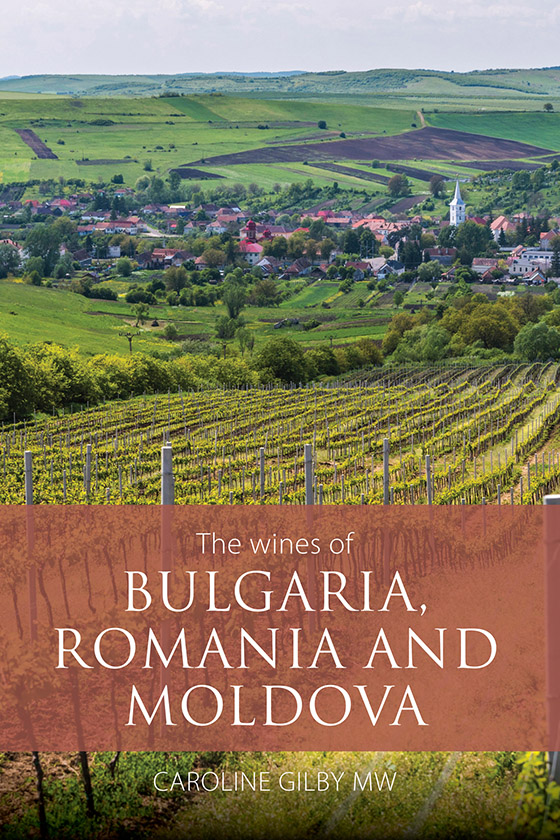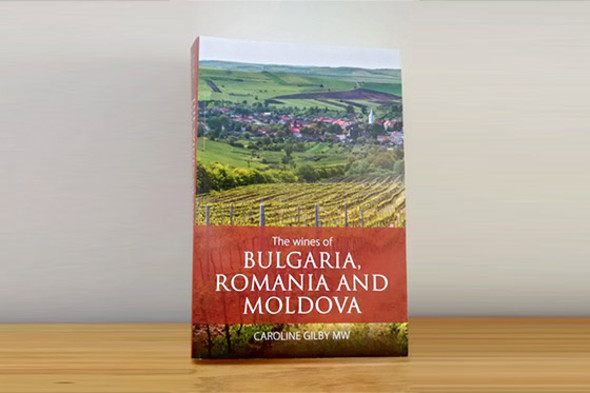Caroline Gilby’s timely book fills a hole given the dearth of accurate and up-to-date information in the English language on these three important, historic wine-producing countries.
Gilby shows her in-depth knowledge of Bulgaria, Romania and Moldova, gained from decades of experience in the region and with its wines beginning in the late-eighties as a buyer for a UK chain of wine merchants. Based in the UK, but a frequent visitor to Eastern Europe, she provides a unique outsider’s perspective to the region, objective yet also highly knowledgeable. She does this with great thoroughness and wit throughout the book, giving comprehensive information on the history and current situation of each country to help those less familiar with the circumstances of Eastern European countries understand the difficult conditions under which winemakers in these countries are still labouring. Moreover, she also recalls many, often humorous, stories from her own experiences and relates personal anecdotes of other UK buyers and consultants as well as local individuals and highlights the hurdles they have had to overcome and continue to be confronted with. These include royalty in Romania reinventing its heritage, how one of Romania’s most important wineries came to be run by an Englishman and eye-opening travels in communist times. She also remarks on the challenges presented by lack of labour, aversion to working together and local perceptions of ’wine’ (often a murky home brew) in a frequently amusing way.
Gilby’s personable style makes the book enjoyable and easy to read. Yet it’s packed with comprehensive information relating to history, cultural background, wine regions, grape varieties and viticultural practices in each country, setting the scene for the reader to see how the past has adversely influenced the wine industry. She mentions the focus on quantity and the formation of land into agricultural cooperatives under communism and the difficulties of regaining or purchasing land afterwards and (re)constructing estates from fragmented vineyard holdings. Gilby demonstrates very effectively how people’s connection with the land, and each other, was destroyed during this time. The content is rich in facts and figures, sometimes mindbogglingly so, backed up with graphs and charts as well as details on wine law and abundant statistics on PDOs, varieties, export and production figures, etc in the useful appendices.
As well as being an enjoyable read, the book is also an excellent reference guide to this exciting region thanks to its richness of content. Gilby covers local and international grape varieties in each country along with detailed information on the regions and a short overview of national cuisine, demonstrating that the region has something genuinely unique to offer.
Did you know, for example, that Bulgaria has only 2 PGIs yet an amazing 52 PDOs, which are hardly used? And that that the brand name of the producer and the variety have far more clout than the wine’s region of origin? And that Romania is in 13th place in global wine production, well ahead of New Zealand? And that it has significant plantings of local varieties as well as international ones and many hybrids (often in people’s home plots)? And that Moldova is the poorest country in Europe, yet is the most economically dependent on wine in the whole world?

Recommended producers are listed for each grape variety and profiles and contact details are provided for significant and quality-driven producers in the region, some of whom played a key role in the resurrection of the modern wine industry, along with a short overview of up-and-coming producers to watch out for.
The book is not only a starting point for those wanting to learn more about this dynamic region, it also has a twist; for those involved in the wine industry in the region who wish to export their wines, it is pertinent that it is written from a Western European commercial perspective. A UK buyer and consultant’s view is evident throughout, offering insight into western wine consumers’ expectations. As well as showcasing the uniqueness of the region and its wines, she pragmatically points out, without coming across as condescending, many of the shortfalls and challenges faced in the region and offers sound advice on how they could be remedied. She reiterates how privileged she was ’to witness the beginning of the new era and see for’ herself ’exactly where these three countries have come from in wine terms. It has been a complete revolution from there to here’, she says, recalling the cheerful student-friendly wines of the mid-nineties, through communist mass-market concoctions to the exciting range of wines from small producers today. It is essential reading matter for anyone involved with wine in Eastern Europe.
Living in nearby Hungary, which Gilby often uses as a benchmark for its neighbours, I am familiar with many of the wines and producers that she profiles here, but often have difficulty obtaining accurate, useful information, so was happy to have more flesh provided around the bones. The book is therefore of interest not only to those with a sketchy knowledge of the region but also those who have more experience in Eastern Europe and would like to expand it.
I would therefore heartily recommend the book for both outsiders looking in and insiders looking out.






